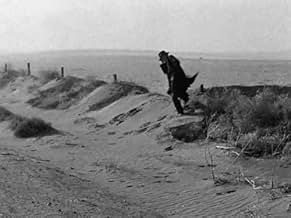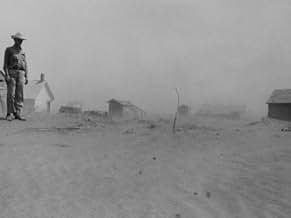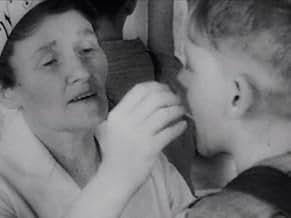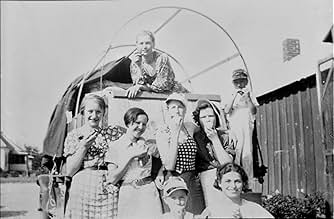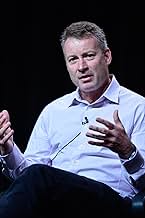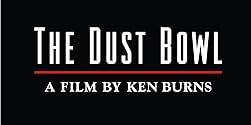VALUTAZIONE IMDb
8,2/10
2259
LA TUA VALUTAZIONE
Uno sguardo alla siccità degli anni '30 nei terreni agricoli delle praterie nordamericane e sulle sue conseguenze durante la Grande Depressione.Uno sguardo alla siccità degli anni '30 nei terreni agricoli delle praterie nordamericane e sulle sue conseguenze durante la Grande Depressione.Uno sguardo alla siccità degli anni '30 nei terreni agricoli delle praterie nordamericane e sulle sue conseguenze durante la Grande Depressione.
- Candidato a 2 Primetime Emmy
- 2 vittorie e 5 candidature totali
Sfoglia gli episodi
Recensioni in evidenza
This is a sometimes difficult-to-watch documentary about the 1930s in the western panhandle of Oklahoma and the area immediately around it, the center of what came to be called the Dust Bowl. Like Burns' other documentaries, at its center is a well-researched narrative that moves in chronological order, delivered wonderfully by his narrator, Peter Cayote, with the perfect voice for an American story.
But also like at least some of Burns' other documentaries, what makes this hit you in the gut, what makes a real impression on you, is seeing and hearing those who lived through this terrible era recall it while trying to keep their emotions in check. As one of them says late in the second part, some survived because they were strong, but others did not. You see that strength in these people. They are all in their 80s or 90s, I would guess, and some appear to be rather frail physically. But they are clearly very strong, yet very modest, individuals.
At one moment in the narrative, we are told about a photographer who was sent out by the federal government to capture the suffering of these people and their plight, so that other Americans would understand the need to help them. The photograph, a woman, was told to make sure to capture their faces and their eyes. That's what Burns does in shooting these witnesses almost 80 years later, and the power of the result is amazing.
That, of course, is the appeal of at least some of Burns' documentaries. They tell us things about America and Americans that we would like to believe are true about ourselves, at least when we are at our very best.
Did all of these witnesses lead perfect lives, with never an unkind word or thought ? Maybe, maybe not. I don't know, and I don't care. But they give us something to strive for, because they tell us that, at least in some of us, at some times, there is a remarkable resilience.
But also like at least some of Burns' other documentaries, what makes this hit you in the gut, what makes a real impression on you, is seeing and hearing those who lived through this terrible era recall it while trying to keep their emotions in check. As one of them says late in the second part, some survived because they were strong, but others did not. You see that strength in these people. They are all in their 80s or 90s, I would guess, and some appear to be rather frail physically. But they are clearly very strong, yet very modest, individuals.
At one moment in the narrative, we are told about a photographer who was sent out by the federal government to capture the suffering of these people and their plight, so that other Americans would understand the need to help them. The photograph, a woman, was told to make sure to capture their faces and their eyes. That's what Burns does in shooting these witnesses almost 80 years later, and the power of the result is amazing.
That, of course, is the appeal of at least some of Burns' documentaries. They tell us things about America and Americans that we would like to believe are true about ourselves, at least when we are at our very best.
Did all of these witnesses lead perfect lives, with never an unkind word or thought ? Maybe, maybe not. I don't know, and I don't care. But they give us something to strive for, because they tell us that, at least in some of us, at some times, there is a remarkable resilience.
Once again, Ken Burns has crafted an excellent, informative documentary. This one is about the Dust Bowl. Interviews, photographs, diary entries and footage are used to paint a picture of the time and place, a time when monstrous behemoths of dust could literally blot out the sun.
Most effective are the interviews. Men and women who were children when dust storms swept the plains tell stories of their experiences. Some of these are very emotional. For example, two brothers choke up at the memory of their sister who died of 'dust pneumonia' when still a young girl. The anguish in their voices is simply heartbreaking. Another man recalls how he became separated from his parents when a dust storm hit and for a while they had no idea if he was dead or alive. All of these stories give one a full appreciation of the devastation wreaked by the event and make it painfully personal and human.
"The Dust Bowl" is a powerful story of human suffering and human endurance. Watching it, I was moved by the plight of people who struggled on against hope in an effort to retain their dignity or survive. It was very educational. I highly recommend seeing it.
(Oh, and to the previous reviewer: Much of this documentary is told through the words of people who actually lived through the Dust Bowl. Quite a bit of the film simply allows these people to speak for themselves without any quick cutting, signs of manipulation, or propagandistic techniques. I saw no signs of any 'agenda' on the part of Burns here.)
Most effective are the interviews. Men and women who were children when dust storms swept the plains tell stories of their experiences. Some of these are very emotional. For example, two brothers choke up at the memory of their sister who died of 'dust pneumonia' when still a young girl. The anguish in their voices is simply heartbreaking. Another man recalls how he became separated from his parents when a dust storm hit and for a while they had no idea if he was dead or alive. All of these stories give one a full appreciation of the devastation wreaked by the event and make it painfully personal and human.
"The Dust Bowl" is a powerful story of human suffering and human endurance. Watching it, I was moved by the plight of people who struggled on against hope in an effort to retain their dignity or survive. It was very educational. I highly recommend seeing it.
(Oh, and to the previous reviewer: Much of this documentary is told through the words of people who actually lived through the Dust Bowl. Quite a bit of the film simply allows these people to speak for themselves without any quick cutting, signs of manipulation, or propagandistic techniques. I saw no signs of any 'agenda' on the part of Burns here.)
Ken Burns really doesn't know how to make a bad documentary, but all of his documentaries have acquired the very familiar style that now borders on the repetitive, and thus borderline boring. "The Dust Bowl" reflects this problem. As is always the case with Burns' documentaries, the images are striking, the interviews moving and insightful, and the narrative - usually - is quite gripping. There's a lot to be learned about the Dust Bowl of the 1930s from this film, and it's generally worth the time. The problem with this film is that no documentary should feel like it takes longer to watch than the event itself. Coming in at nearly 4 hours, this is a bit more narrative about the dust bowl than this particular viewer wants to absorb. After so many great works, Burns' editors seem to have shied away from trimming his films to a length and pace more suitable to the topic. The middle portion of this documentary in film in particular drags on incessantly with tales of one dust storm after another until one is compelled to exclaim "enough - I get it! For Ken Burns fans and those really interested in the dust bowl, this is a worthy watch. For those with a more passing interest, I suggest the PBS documentary from the "American Experience" series.
This "docu-drama" contained more political statements than a French feminist melodrama. OK, I admit I exaggerate but if you want to make a documentary you have to consider all possible angles and not be a servant to your own point of view. This is not a documentary. It is Ken Burns world view about the dust bowl. Don't look for reasonable explanations about the causes and circumstances in which the event occurred. It like one of those zombie movies, you know the ones which starts like, "its the year 2137, there has been a deadly virus attack and only few humans survive and the rest have turned to zombies". You know this is not a real story yet they put enough real circumstances in it for you to be engaged. This is the zombie movie of documentaries.
All Americans have heard of the Dust Bowl and know it was a phenomenon associated with drought in the 1930s, and that Okies left for California, a la The Grapes of Wrath. We have also heard about the more recent droughts in the West. So the thought arises, could it happen again? But that's about it. Most non-Americans don't even know that.
With some of his documentaries on more distant subjects, Ken Burns relied on old photographs and narratives read by actors. But The Dust Bowl is the story told by the people who saw the massive dust storms, day after day, with their own eyes, breathing the dust, eating the dust, getting lost in the dust. They are often the very people in the pictures used. At at the end, we see a dedication listing the participants who had died before the documentary was released. Burns was just in time to save this bit of oral history.
What struck me initially was how objective, unemotional, and even dry was his approach, far less spirited than subjects like the Statue of Liberty, Baseball or Jazz. And the pace is leisurely, a lot of time spent looking at a lot of towering dust clouds and hearing account after account of being engulfed by dust and sand. Most film makers would have sped things up for the MTV generation, perhaps added booming sound effects and gimmicky zips and flashes to keep our attention. But this is Ken Burns, and he has the street cred to do things his way. And it was the right way. People actually lived through these dust and sand storms for years, so surely we can endure the accounts for a few hours to get a feel for it.
But this tells a larger story, of how the region was settled, telling another side of the Oklahoma land rush that I had never heard, and how government policies and World War I led to foolish overproduction of wheat on land better suited to grazing. Yes, foolish. The people involved say so, themselves, for the most part. This is not Ken Burns political propagandist, as some reviewers allege.
What struck me is how objective this account is, how balanced, presenting various sides, and grounded in fact, like good journalism. The film covers the New Deal policies of FDR to try to save the land and help those living in the Dust Bowl; it also provides insight into the origins of farm price support policies. Is this what causes some viewers to froth at the mouth? I kept waiting for the judgment, the observation that global warming could cause more dust bowls, in America, and around the world. But it never came. Perhaps he could anticipate the response. Frankly, he didn't need to spell out the connection.
With better, scientific farming practices, the Dust Bowl land could be saved, more or less. You still need rainfall, unless you are willing to drain aquifers. But the story of the Dust Bowl also offers some promise that there may be intelligent ways to adjust to the effects of climate change on agriculture. Discussion of this is the part that I wish was included.
This is a vitally important story that needs to be remembered, with lessons for our and future generations. It is also a story of the human spirit, of people who endured hardship far longer than any of us should, or probably could, bear. I am glad they got a chance to share their story with us.
-- Footnote:
A good supplementary program is The Civilian Conservation Corps episode of The American Experience, #22.1, for a larger context on the environmental and economic situation.
With some of his documentaries on more distant subjects, Ken Burns relied on old photographs and narratives read by actors. But The Dust Bowl is the story told by the people who saw the massive dust storms, day after day, with their own eyes, breathing the dust, eating the dust, getting lost in the dust. They are often the very people in the pictures used. At at the end, we see a dedication listing the participants who had died before the documentary was released. Burns was just in time to save this bit of oral history.
What struck me initially was how objective, unemotional, and even dry was his approach, far less spirited than subjects like the Statue of Liberty, Baseball or Jazz. And the pace is leisurely, a lot of time spent looking at a lot of towering dust clouds and hearing account after account of being engulfed by dust and sand. Most film makers would have sped things up for the MTV generation, perhaps added booming sound effects and gimmicky zips and flashes to keep our attention. But this is Ken Burns, and he has the street cred to do things his way. And it was the right way. People actually lived through these dust and sand storms for years, so surely we can endure the accounts for a few hours to get a feel for it.
But this tells a larger story, of how the region was settled, telling another side of the Oklahoma land rush that I had never heard, and how government policies and World War I led to foolish overproduction of wheat on land better suited to grazing. Yes, foolish. The people involved say so, themselves, for the most part. This is not Ken Burns political propagandist, as some reviewers allege.
What struck me is how objective this account is, how balanced, presenting various sides, and grounded in fact, like good journalism. The film covers the New Deal policies of FDR to try to save the land and help those living in the Dust Bowl; it also provides insight into the origins of farm price support policies. Is this what causes some viewers to froth at the mouth? I kept waiting for the judgment, the observation that global warming could cause more dust bowls, in America, and around the world. But it never came. Perhaps he could anticipate the response. Frankly, he didn't need to spell out the connection.
With better, scientific farming practices, the Dust Bowl land could be saved, more or less. You still need rainfall, unless you are willing to drain aquifers. But the story of the Dust Bowl also offers some promise that there may be intelligent ways to adjust to the effects of climate change on agriculture. Discussion of this is the part that I wish was included.
This is a vitally important story that needs to be remembered, with lessons for our and future generations. It is also a story of the human spirit, of people who endured hardship far longer than any of us should, or probably could, bear. I am glad they got a chance to share their story with us.
-- Footnote:
A good supplementary program is The Civilian Conservation Corps episode of The American Experience, #22.1, for a larger context on the environmental and economic situation.
Lo sapevi?
- QuizExtracts from the interviews in this documentary were used by Christopher Nolan in Interstellar (2014) when depicting the dust storms on Earth.
- ConnessioniFeatured in Interstellar (2014)
- Colonne sonoreThe Plainsman
Written by John Owen Lardinois
Performed by Fiddlin' Johnny
From Cowboy Legacy
© 1997 Makoché Music
I più visti
Accedi per valutare e creare un elenco di titoli salvati per ottenere consigli personalizzati
- How many seasons does The Dust Bowl have?Powered by Alexa
Dettagli
- Data di uscita
- Paese di origine
- Sito ufficiale
- Lingua
- Celebre anche come
- Dust Bowl - Die Jahrhundertdürre
- Aziende produttrici
- Vedi altri crediti dell’azienda su IMDbPro
- Tempo di esecuzione
- 46min
- Colore
Contribuisci a questa pagina
Suggerisci una modifica o aggiungi i contenuti mancanti

